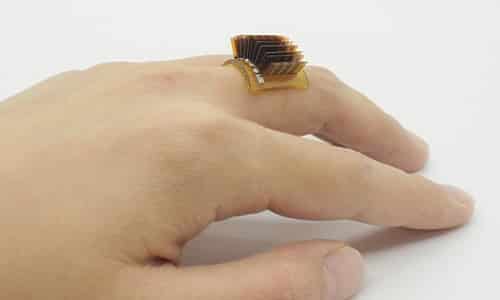The thermoelectric device, that follows the development of previously flexible electronic skin, is capable of providing constant power

Researchers at CU Boulder have developed a new, low-cost wearable device that transforms the human body into a biological battery. The stretchy device can be worn like a ring, a bracelet or any other skin accessory.
By tapping into a person’s body heat through thermoelectric generators (that convert temperature into electricity), the device can generate about 1 volt of energy for every square centimetre of skin space—less voltage per area than what most existing batteries provide but still enough to power electronics like watches or fitness trackers.
“In the future, we want to be able to power wearable electronics without having to include a battery,” said Jianliang Xiao, associate professor in the Paul M. Rady Department of Mechanical Engineering at CU Boulder.
The stretchy device can heal itself when damaged and is fully recyclable—making it a cleaner alternative to traditional electronics.
“Whenever you use a battery, you’re depleting that battery and eventually replace it,” Xiao said. “The nice thing about our thermoelectric device is that you can wear it and it provides you with constant power.”
High-tech design
Xiao previously experimented with designing “electronic skin,” wearable devices that look and behave, much like real human skin. Now, the latest innovation, made out of a stretchy material called polyimine allows a series of thin thermoelectric chips to be stuck onto the base, connecting them all with liquid metal wires. The final product looks like a cross between a plastic bracelet and a miniature computer motherboard (or maybe a techy diamond ring).
“Our design makes the whole system stretchable without introducing much strain to the thermoelectric material, which can be brittle,” Xiao said.
While doing a rigorous physical activity, such as exercise, the body heats up, which is radiated out in the surrounding air. The device captures that flow of energy rather than letting it go to waste.
“The thermoelectric generators are in close contact with the human body and they can use the heat that would normally be dissipated into the environment,” he said.
So a person taking a brisk walk could use a device the size of a typical sports wristband to generate about 5 volts of electricity—which is more than what many watch batteries can muster.
Lego blocks
He added that one can easily boost that power by adding in more generator blocks.
“It’s like putting together a bunch of small Lego pieces to make a large structure. It gives you a lot of options for customisation,” he said.
Also, the new device is as resilient as biological tissue. Even if the device tears, the broken ends can be pinched together and sealed back up in just a few minutes. And when you’re done with the device, you can dunk it into a special solution that will separate the electronic components and dissolve the polyimine base—every one of those ingredients can then be reused.
“The device is cheap and reliable, while also having as close to zero impact on the environment,” Xiao said.
While there are still kinks to work out in the design, he thinks that his group’s devices could appear on the market in five to 10 years.
For more, read here.







